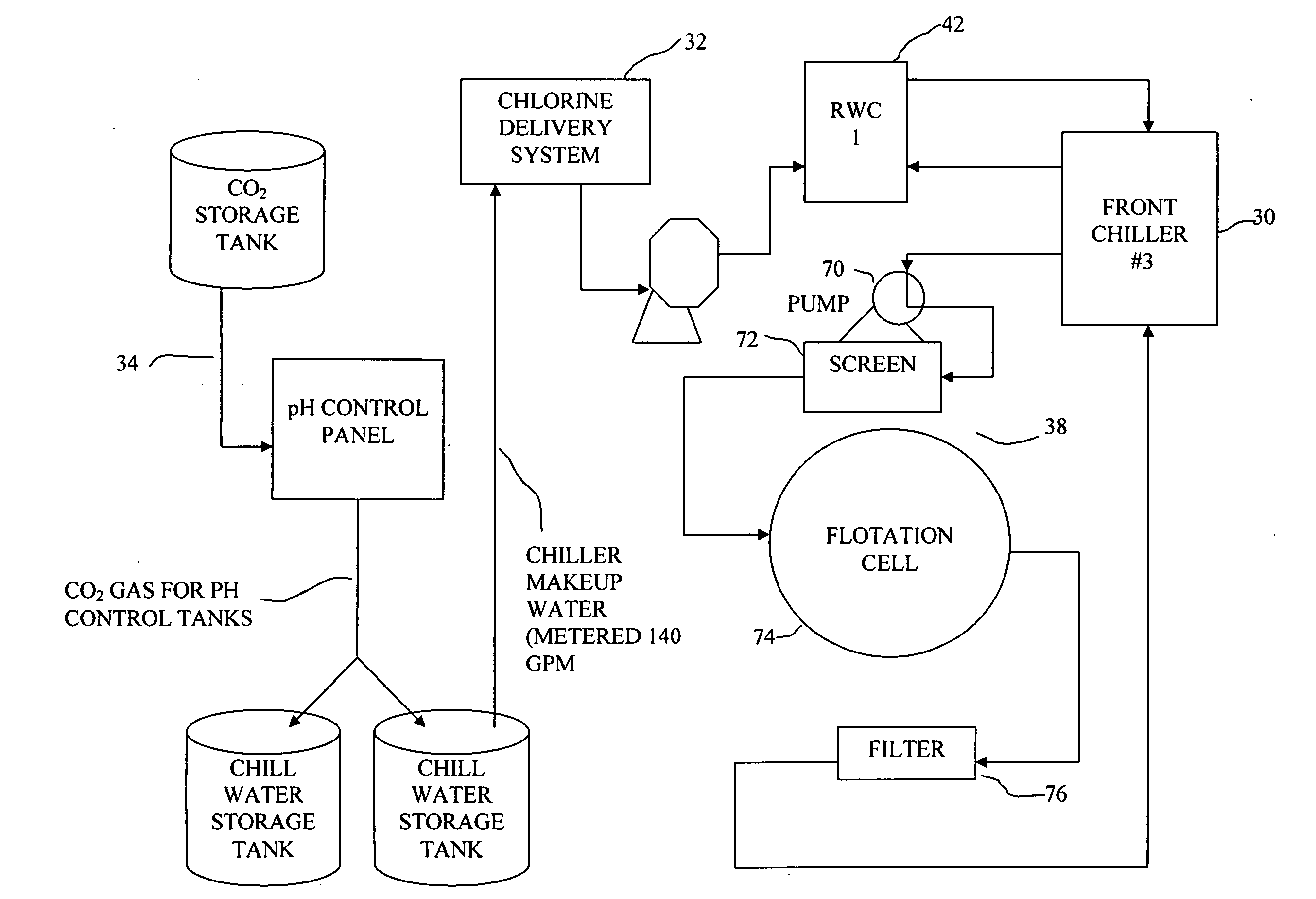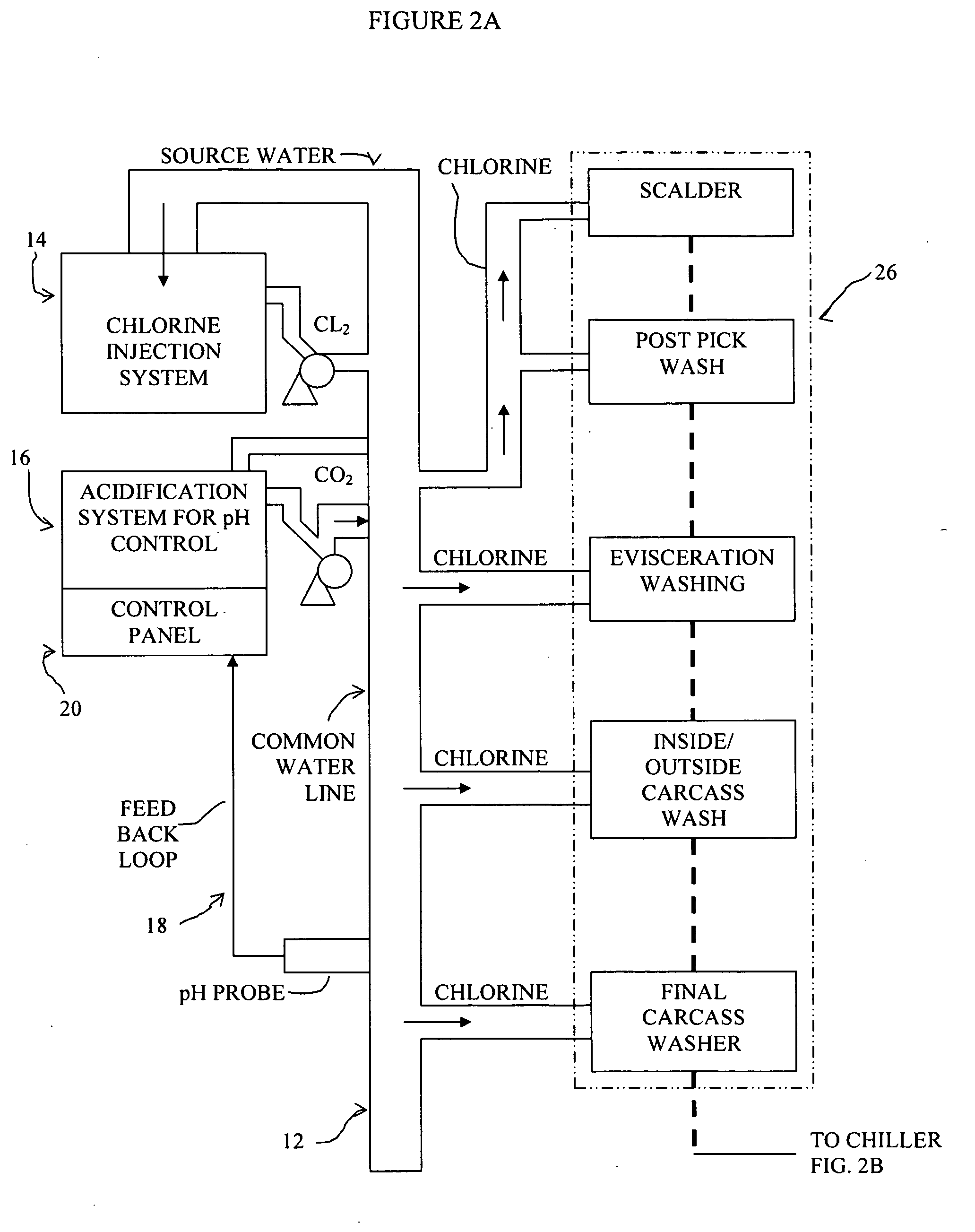Intervention techniques for reducing carcass contamination
a technology carcasses, which is applied in the field of intervention techniques for reducing the contamination of carcasses, can solve the problems of insufficient single point treatment of rapidly moving carcasses on a production line, insufficient process to meet the complex food safety requirements of poultry processing plants, and further disadvantaged processes, so as to improve the food safety, enhance the effect of food safety and improve the efficiency of the production process
- Summary
- Abstract
- Description
- Claims
- Application Information
AI Technical Summary
Benefits of technology
Problems solved by technology
Method used
Image
Examples
Embodiment Construction
[0026]The preferred embodiments of the apparatus and methods disclosed herein are discussed in terms of a disinfection process designed as an intervention step in poultry processing to allow for continuous on-line reprocessing of poultry carcasses that may have accidentally become contaminated during the evisceration process. It is envisioned, however, that the disclosure is applicable to a wide variety of processes including, but not limited to, general carcass or foodstuffs processing including processing operations used in poultry, beef and pork slaughter plants.
[0027]As discussed throughout the present disclosure, the control of the pH of the treatment water within product processing water optimizes the elimination of pathogens and other microorganisms. Also, by providing an intervention step to allow for continuous on-line reprocessing of poultry carcasses, there is a reduction in the amount of physical handling of carcasses and therefore, a reduction in the potential for cross...
PUM
 Login to View More
Login to View More Abstract
Description
Claims
Application Information
 Login to View More
Login to View More - R&D
- Intellectual Property
- Life Sciences
- Materials
- Tech Scout
- Unparalleled Data Quality
- Higher Quality Content
- 60% Fewer Hallucinations
Browse by: Latest US Patents, China's latest patents, Technical Efficacy Thesaurus, Application Domain, Technology Topic, Popular Technical Reports.
© 2025 PatSnap. All rights reserved.Legal|Privacy policy|Modern Slavery Act Transparency Statement|Sitemap|About US| Contact US: help@patsnap.com



